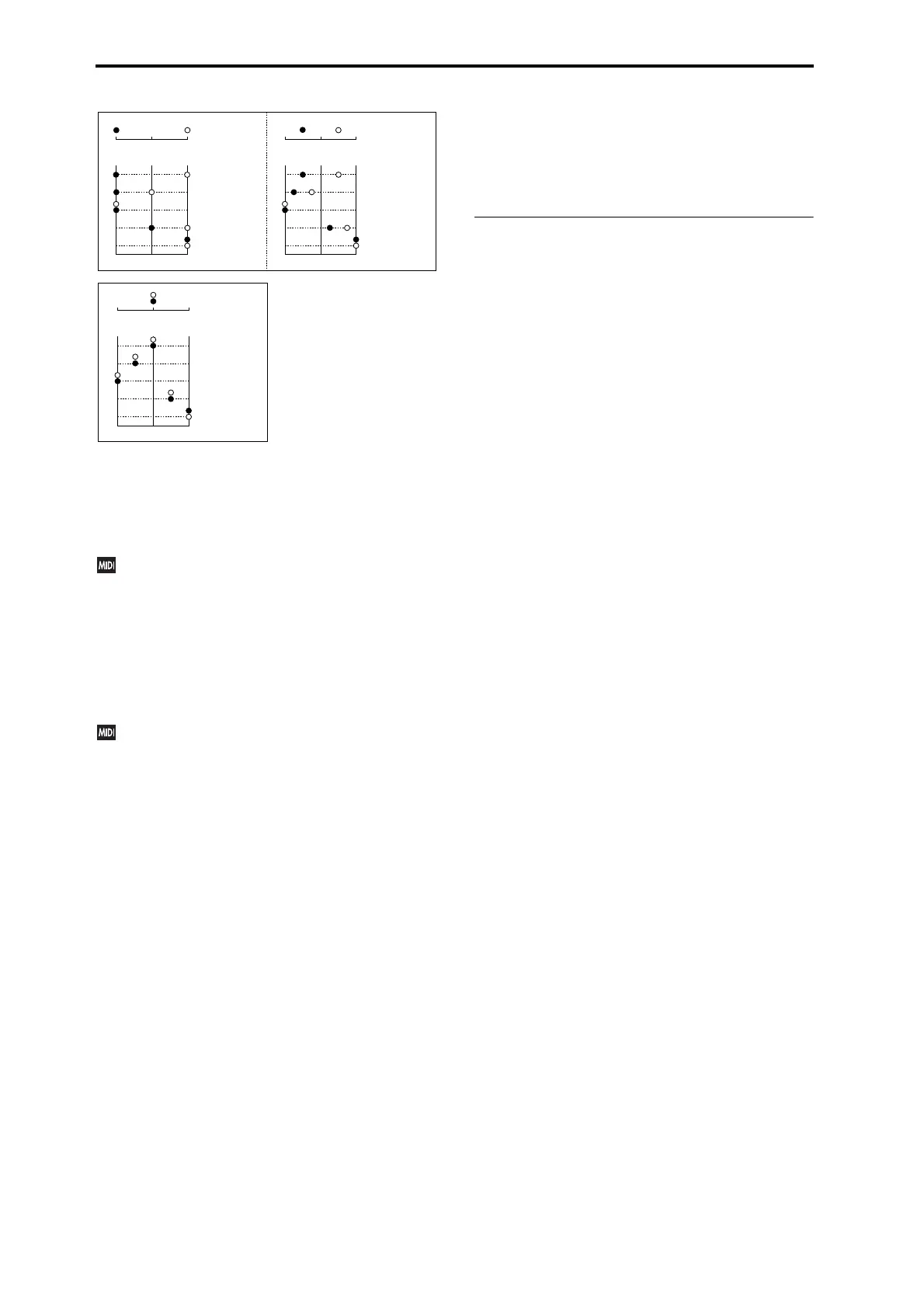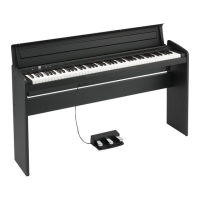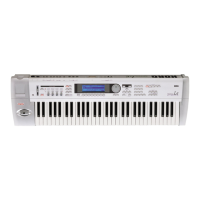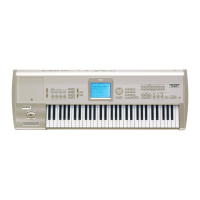Combination mode
124
If a mono insert effect is in use, the settings you make here
will be ignored. In this case, the Pan: #8 parameter in P8–1:
IFX–Insert FX Setup page will adjust the panning of the
sound after the insert effect (“Mixer” on page 430).
RND: The oscillator pan will change randomly at each note-
on.
If Status (Combi 3–1(2)c) is set to INT, CC#10 (pan)
messages can be received to control the setting. CC#10
values of 0 or 1 will place the sound at far left, 64 at
center, and 127 at far right. (exclude RND) Pan can be
controlled by messages received on the MIDI Channel
(Combi 3–1(2)c).
Volume [000...127]
Adjusts the volume of each timbre 1–8.
Tip: You can use the control surface to control this parameter.
The volume of each timbre is determined by
multiplying this volume value with the MIDI volume
(CC#7) and expression (CC#11).
If Status (Combi 3–1(2)c) has been set to INT, incoming
MIDI CC#7 or CC#11 messages will control the volume
of a timbre. (However these messages will not affect the
setting of this parameter.)
If Status is EXT or EX2, the value of this parameter will
be transmitted as MIDI CC#7 when the combination is
changed. However this will not be transmitted by a
timbre that is set to the same MIDI channel as the global
MIDI channel. This message is transmitted on the
MIDI Channel (Combi 3–1(2)c) specified for each
timbre.
Hold Balance [Off, On]
On (checked): When any one of the volume sliders is
moved, the volume of the other timbres will change as well.
The volume balance of timbres 1–16 will be maintained. This
is useful when you wish to adjust the overall volume.
Using the control surface to adjust the volume
You can use the control surface to adjust the Volume of each
timbre. These settings can be made from the front panel
mixer section, or within this display page. Here’s how to
adjust the volume from the front panel.
Volume
1. Press the CONTROL ASSIGN MIXER switch to select
timbres 1–8 or 9–16.
2. Operate the MIX VOLUMES 1–8 sliders.
Timbre 02...08 (Timbre Number):
Here you can specify the program etc. for each Timbre 2
through 8. These are the same as for timbre 01. For more
information, please see “Timbre 01 (Timbre Number):,”
above.
▼0–3(4): Menu Command
• 0: Write Combination ☞p.185
• 1: Panel–SW Solo Mode On ☞p.106
• 2: Exclusive Solo ☞p.107
• 3: Copy from Program ☞p.185
• 4: Copy X–Y Motion ☞p.107
For more information, please see “Combination: Menu
Command” on page 185.
OSC1:
Amp1 Pan=L001
OSC2:
Amp2 Pan=R127
Left
Center
Right
Pan (CC#10)
C064
Left
Center
Right
L032
L001
R096
R127
Left
Center
Right
Left
Center
Right
OSC1
OSC2
OSC1
OSC2
OSC1:
Amp1 Pan=L032
OSC2:
Amp2 Pan=R096
Pan (CC#10)
C064
L032
L001
R096
R127
OSC1:
Amp1 Pan=C064
OSC2:
Amp2 Pan=C064
Left
Center
Right
Pan (CC#10)
C064
Left
Center
Right
L032
L001
R096
R127
OSC1/EXi1
OSC2

